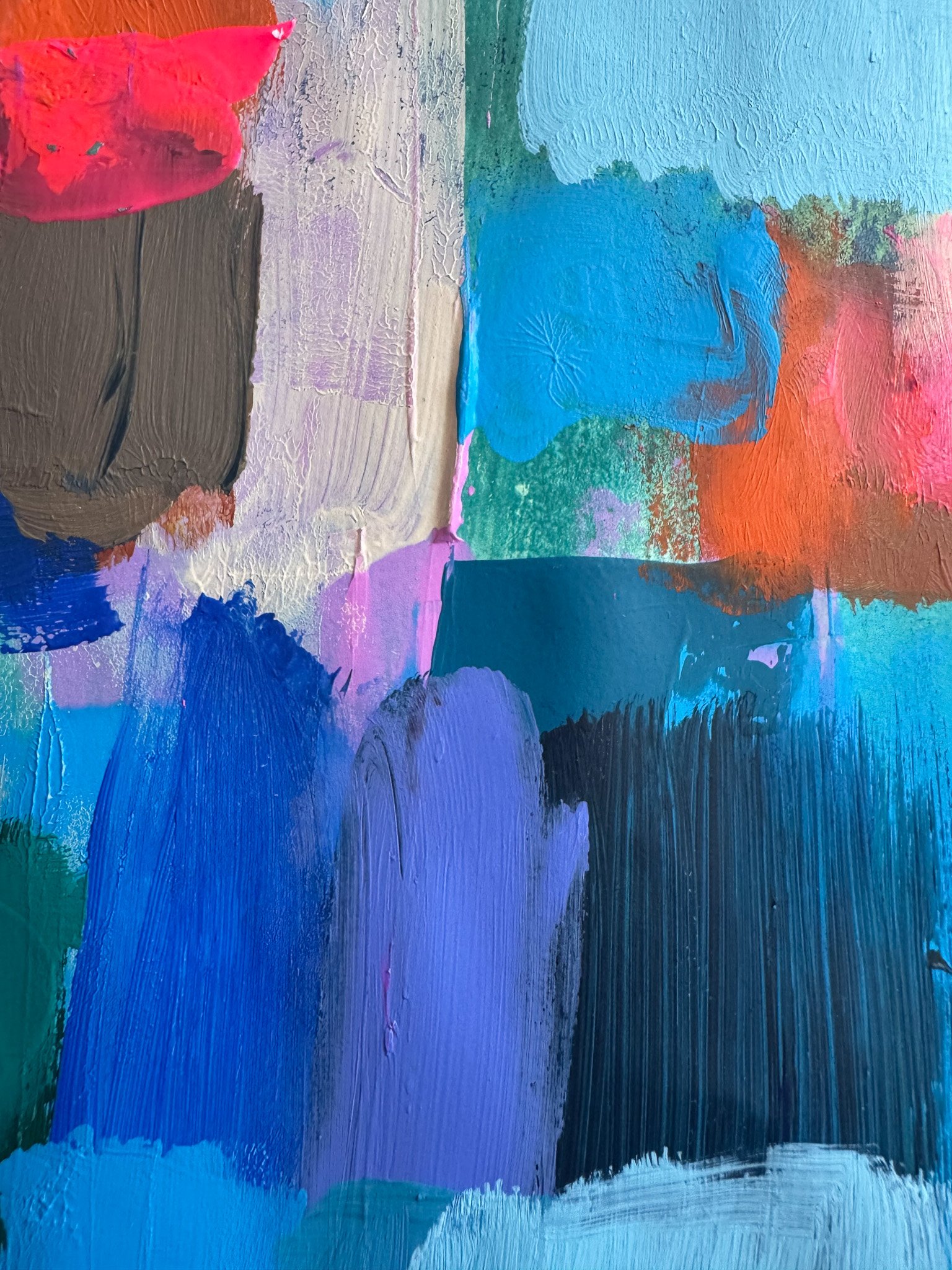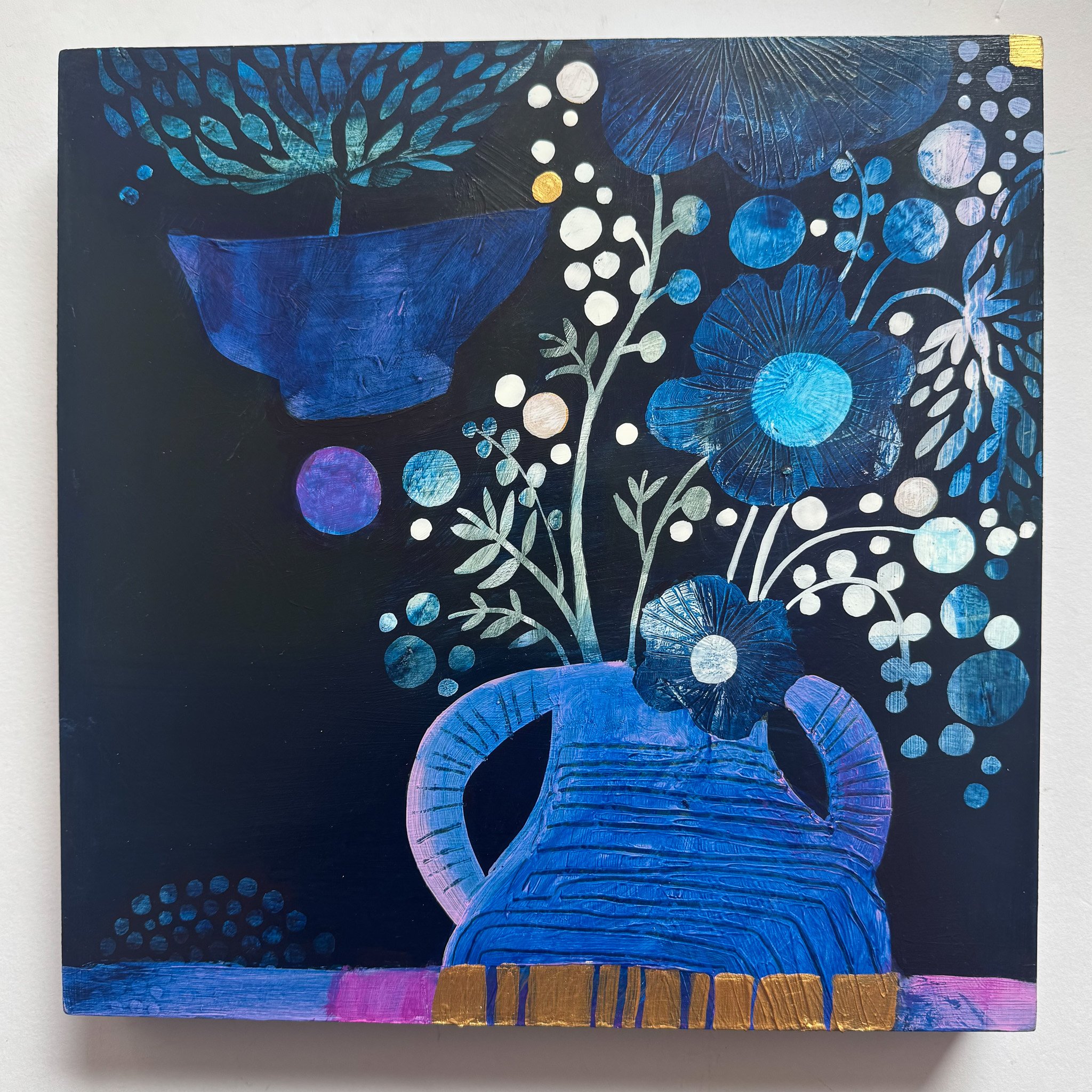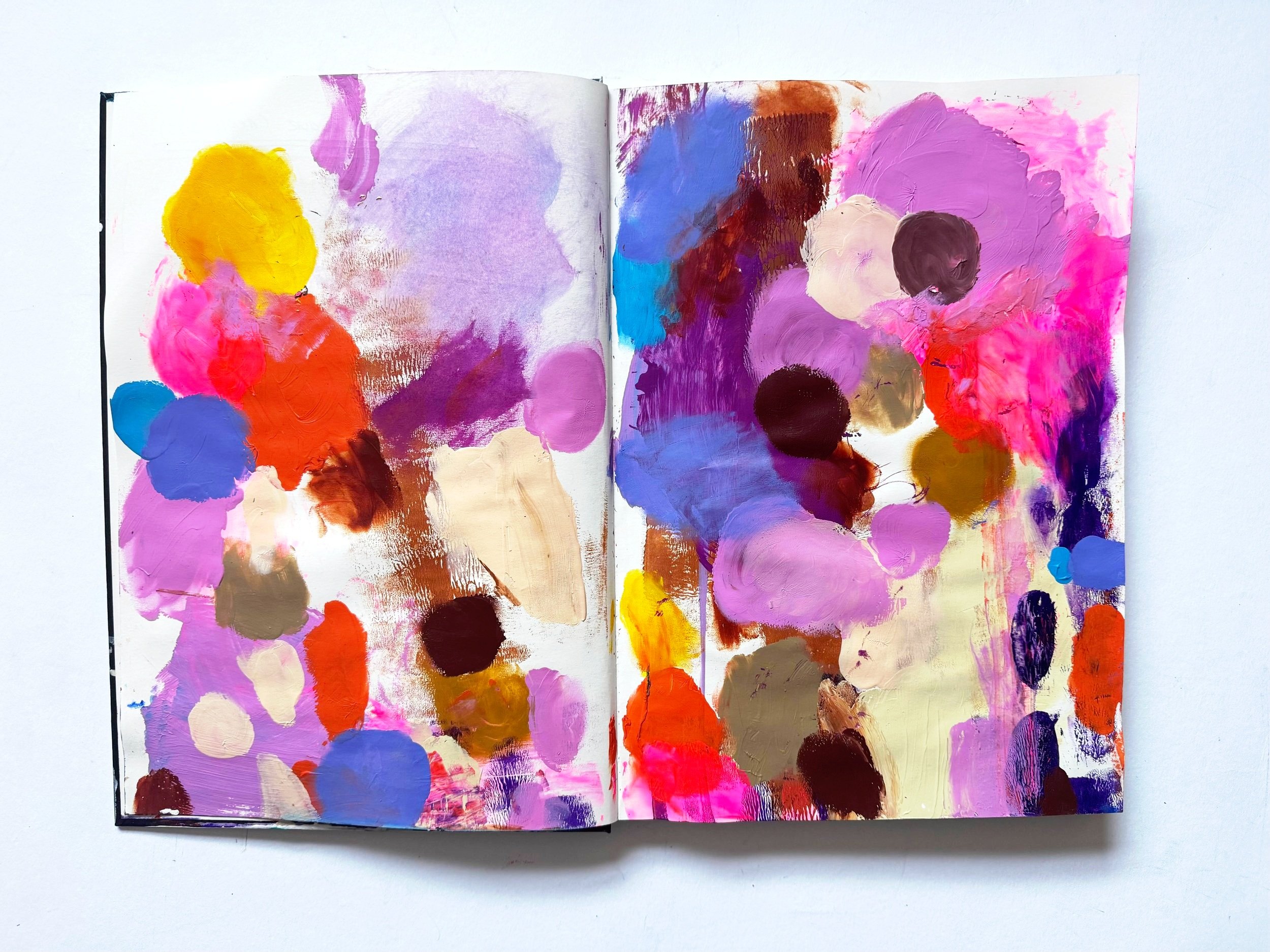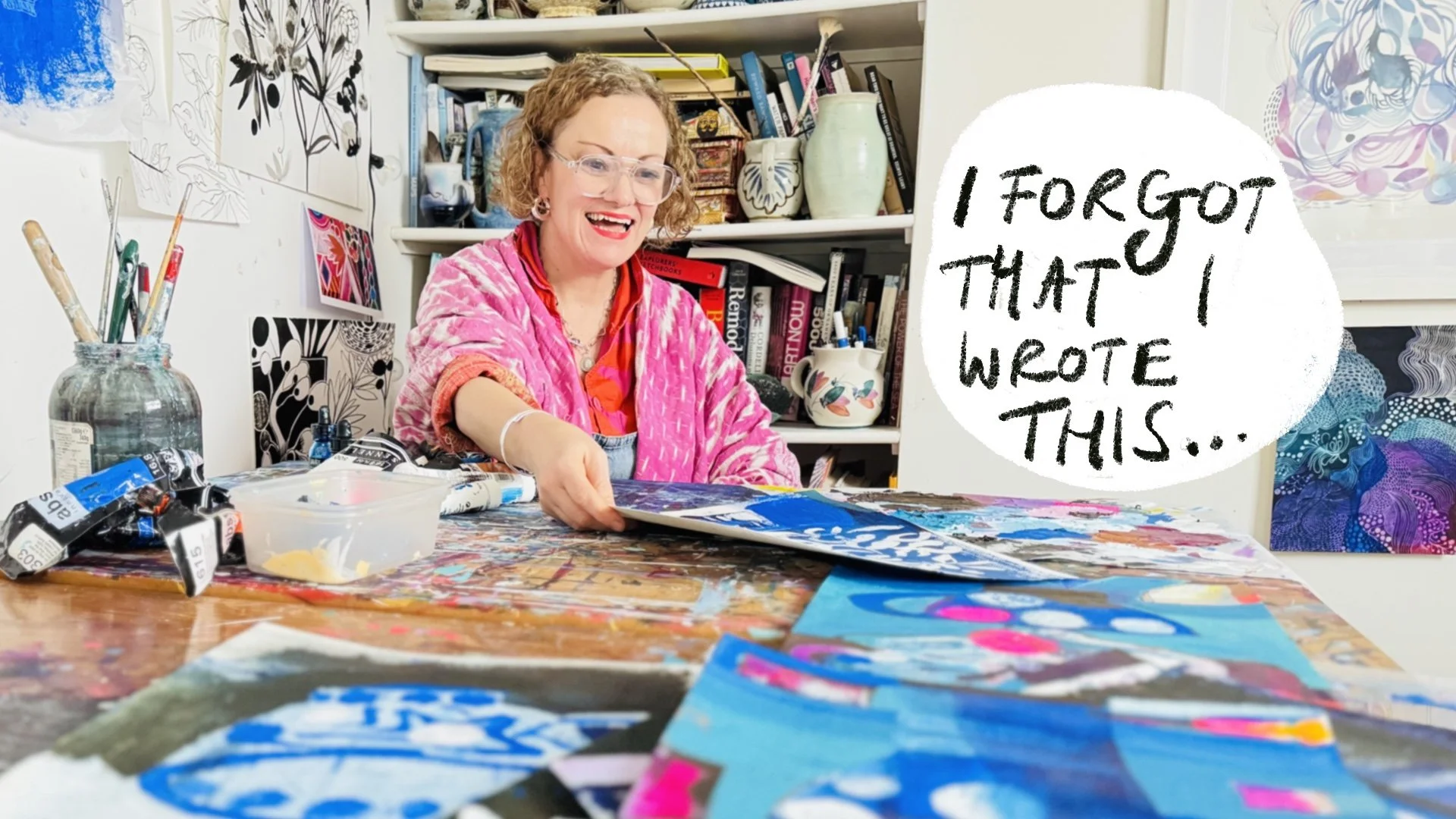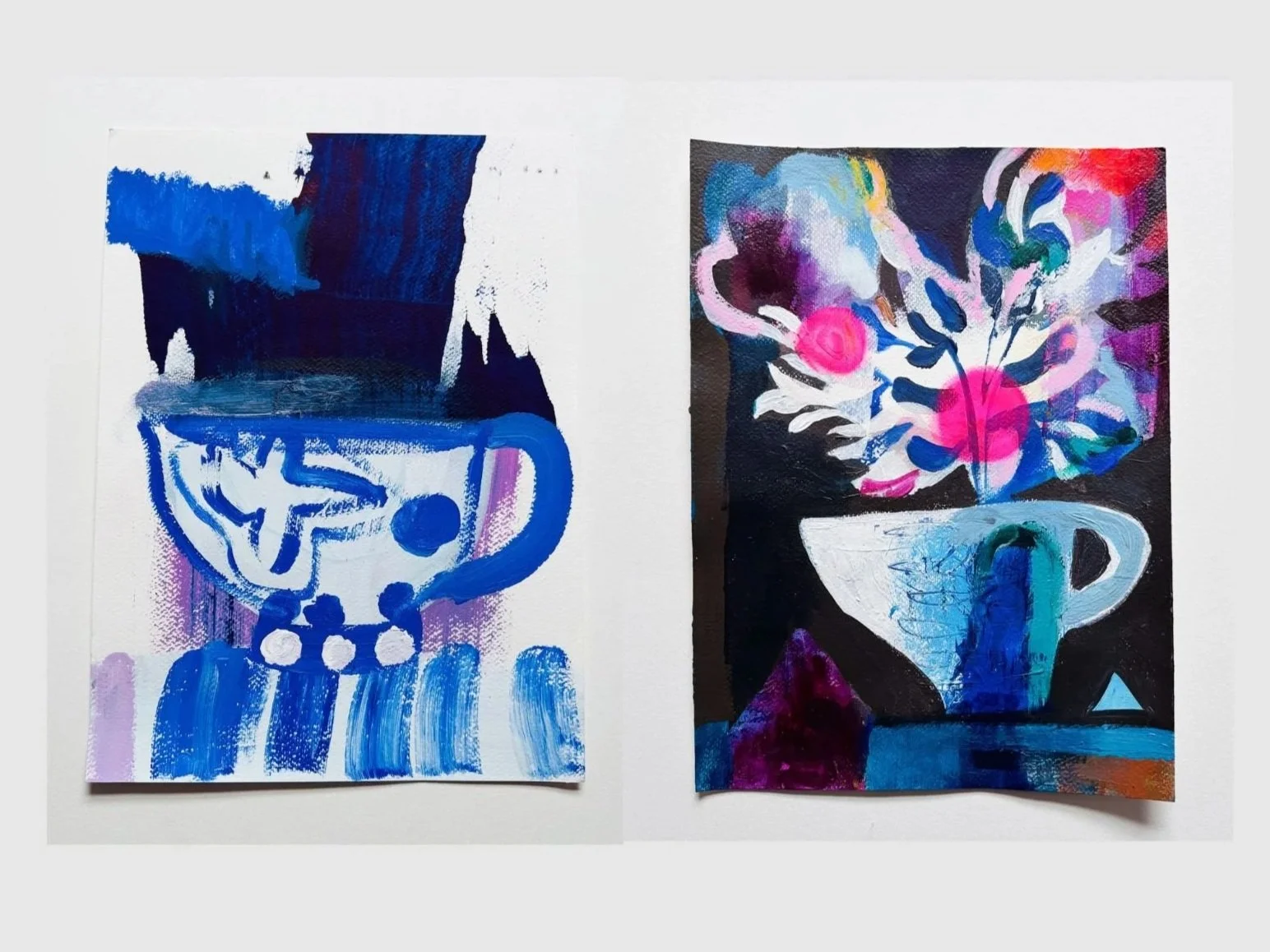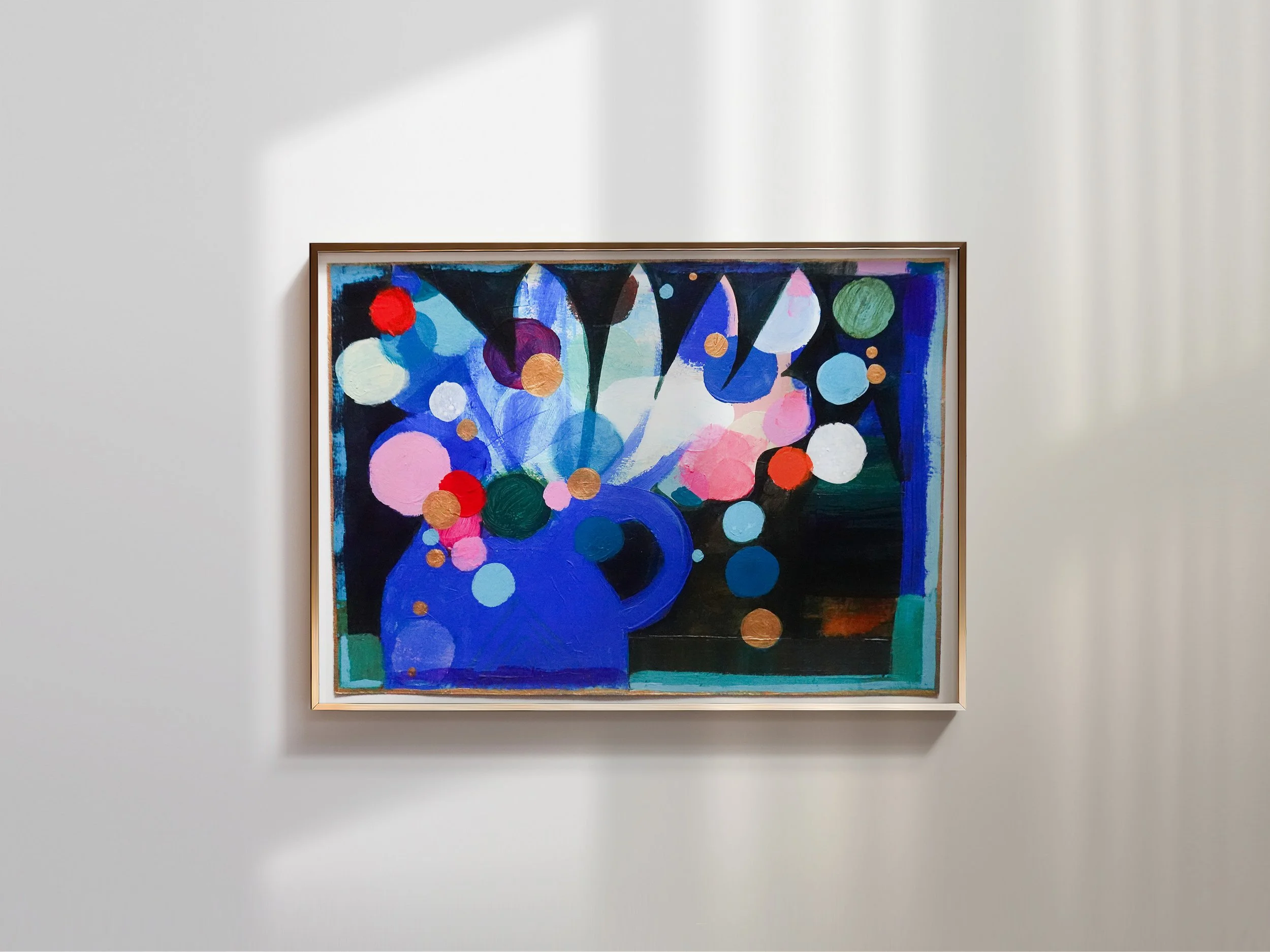Exploring and enjoying colour
I have been playing with colour and paint in my sketchbook, making messy kaleidoscopes of colour.
This process has been freeing and surprisingly illuminating and I wanted to share some of it with you. These colour explorations have not been about technique, finished composition or overthinking; but more about curiosity and experience.
Colour interactions
The painted pages in my sketchbook explore colour relationships, colour combinations and colour interactions.
Building up pages of paint smears, smudges, blobs, spots and stripes of colour to explore how different colours work in relationship to each other. Not worrying about the overall compositon, just thinking about colour relationships. Not worrying how the pages look as a whole, but searching for interesting and exciting colour interactions and moments.
A sketchbook is a great place to run free and try things out, to explore, experiment and go a little wild, to discover things about colour which we can then integrate into future creations or more considered paintings.
The pages I have created as a whole may look messy and confused, but there are fascinating colour interactions hidden amongst the chaos.
I’ve some taken some close up, detail photographs of a few of the colour combinations I spotted within the pages.
Details from my painted colourful sketchbook pages
Details from my painted colourful sketchbook pages
Details from my painted colourful sketchbook pages
Details from my painted colourful sketchbook pages
Details from my painted colourful sketchbook pages
Details from my painted colourful sketchbook pages
Details from my painted colourful sketchbook pages
Details from my painted colourful sketchbook pages
Colours are relative
Colours are relative. They change depending on the colours they are next to and the best way to find interesting colour combinations that work together is often to experiment and experience.
Colour is emotional
Colour is emotional. Our colour sense is deeply personal. The colours we personally prefer are often linked to individual experiences, memories and things from our own life. Paying attention to the different colour interactions that you love and noticing how colours make you feel can be a powerful part of developing art which feels personal to you.
Helen Frankenthaler the American abstract expressionist said about colour:
"When I choose a colour it’s not because of scientific theory. It comes from observation, from feeling, from the soul.”
A few simple ways to explore colour
If you’d like to experiment with colour here are a few ideas you may like to try:
Create colourful pages of stripes, spots or squares
Using a ‘ready made’ compositional structure such as stripes or spots, can help you explore a whole range of colour ideas within a very defined parameter. They don’t have to be neat and precise.
Seek interesting moments of colour
My painted pages may look confusing as a whole but they contain many interesting colourful moments. Fill a page full of colourful daubs and smears and then use your phone or camera to seek interesting colourful compositions or combinations within the whole.
Create colour moods
Choose a word or emotion i.e. restful, vibrant, tender, and mix colours that match how that specific word feels to you. It’s a beautiful way to connect with your intuition and stretch your colour vocabulary.
Permission to make a mess granted
Let’s release the idea that colour swatching has to be neat and orderly. Let the paint drip. Let colours clash. Paint over something. Try something that feels wrong. Try colours you don’t immediately love. Some of the best breakthroughs happen when we give ourselves permission to mess it up.
Courage and curiousity
Colour theory is helpful, but so is intuition and experience. A willingness to experiment, observe, and respond to what excites you can lead you in interesting directions. Learning through experimentation can be invaluable and illuminating.
Your sketchbook is the perfect place for this kind of colour adventure. No pressure. No rules. Just colour, curiosity, and a little bit of courage.
Artists mentioned in the video:










